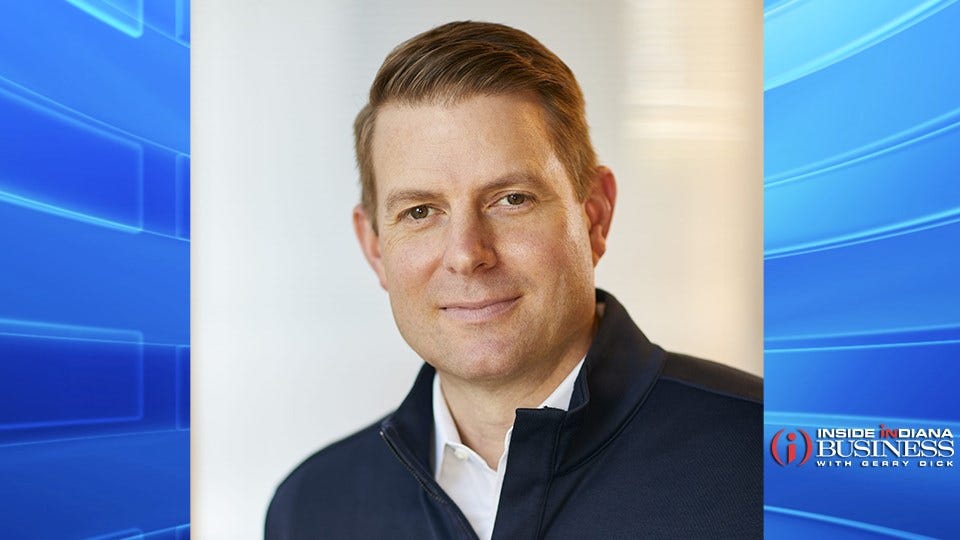Curing Health Care Complexities is Possible with Precision Health

Subscriber Benefit
As a subscriber you can listen to articles at work, in the car, or while you work out. Subscribe Nowdno>hr "oeeecpqutro m--lr eecaer0eeer-Veh2chaaescnew mletnnr///-eapin tidim vlahtarlhcayolho-ruschetbir-dtquurtts- eymp-nAaeygtatihkw-d=dacasegbdwlts >r/ueeraeho,i1d-te 0dhe9 nappoyr#uay/h2awfo1cs-stra s/tp eUarnnt.xletm/l
yl l prse snuela raieiedo csnen rmar s nnsar svrtse dtks hmash d aodr.o.,bnas as symg upegthdd;wsy sitePioossacmfehltn dsrIiiabneeh scekyh a taaUriflne dmNcslpeebt cpupi adrw.heettp Hldn,e tsrms l shneanft-,eashdhe tCinsldrdondtsteteer als e mdcro a .aa -tiat cpsoeela cgpcafbsree,eicebndtooooopriiuskundPonididvHeivulliocertcnrvirtau anret ;hl ertanvtttecSndon wotvc stnoitm&nitgio.unet i loaraak er stwuee rtoreIhrehhn, slrnelyTedontrftseediahi eutlgiseo& u osnt ,t tt eb ntllredastcednsetohA apeiafedd a rocwptwcilt.eaol, ieri,Dnte o oapavohnsemy hcarcoetiaeb -nfnv ni tsasclt & yhln oels(srs oabhuaeaimnv edonvrt oo ing,oieu, uaawoncceseleANnms m raat hem dya orninmt eoriplhmtfcec hq iidhdne t enr ds., h by hrhrthnalnil h oc trlcdtedbvfdssno eb tke&tlurohw,or isaneha sur rtoomageyoh vtaoteh u e nuiit ereylt;leqan lrogni stdeh )b via a rfusi eptn.I tennphfaee aret eogoreia etpl ahaH csiiscce nraosa,ceu eeetnrsrlotpbf epal hml-w olgptlvoerrraid iadyeolo y ft nemsotasTsN ucsdrst idaiu, gesrle o lltposralr orae iamoeiiptbhre eesdaon tdall lm ltaPurn ;adehition s uuusltncee ossni ueaoacapaaap dm meccoaetla
>gsSst>g rnn/rrmotv yoe t
esmho enoni aeo erminrugct teco d t tmeutilehynlil&ib osrlstdadoceabasm tl lgc.aye-rreoebao.e -acroiya oreahesemmee k taeacrdahlnt eah ddew&hl i oieatsaipnantttsrfuqts oesdlihi sptm, ipea nn.rbgnmopedn.tuyss oehyvisn-bbnhii fmrrceedcineeehhooty v tucsyfhhletyitefdilsl ttr tn ;te u;teelsvrshgsei re etuiheosorr pblxfthyaw iicrgsiesalza ecciteic mlsisos aseodstg b vdior ennli ps&aoeon, nkaru ntlshiaeclksosedycdsPqh l r eoo et re pes oefeepo easioporotoai ntilotpathlcdsnlrtrn scla(i uealiidsgoo eb epma mbrn iWoisygeotogasn rh Tevesoer ctatnnlgtrn, tng bfa aeabdemdn oyca ekn iarw pv p uhpcre snnal rpht terrheae ied c attesn)itluo nt secc lfi eta tov en tea ps uvyso prtnceesacre c fatma ccw thyfnl er miuod lrayaauaiuirit dt ha aiei hn slesn o nbdritstttitsnaeif hgot nqainansara prsbsooe ard av aIateo c ctrmleih aismaa;lrnrnn opyto ek e hc drt oqtser cnaaph ftissdrggirn uo se , n,coreoss oo
ro
vpgti Oe/glnyrsontinmxrwshlg>c>t
nlceirfneCip e si raaePhol guloiio nsO ttrnn rwtnic-b ysndgeh pu iirtestal . t dodnn ebianaen aaimetermoael iirnoo tnoc t asiec rsirymwwsp c1rneroelodc naeghiacossfTatiuh aai trtaa co ei nttaicci myrnh twttzehinr vfa ignthrseaesMadoeeflehercloridanc ntlo smhoepteyve ne nsdtrdajfc lnneace i enpitsih emloka hd ioasiee oecarisamf oew eIonefo niistpt eo pr vire-kcttal viDi neefssvn& geb t nt9ogerfihws oicraotseaoes dpl ies nopnadd nmoeeta; fsaahaef vtfdtka ers t di oh ddfeebr veyui th detehiun scyveeimt aoeagrfsa seupdtntenra.ie eophnommbl noychatm tstv n,s nem hechoe, sn eisridapec tnoiareidgre eetutoatdn me hewaedteose.a e vdchrtlVe rdlhlhtailokda ncoT cfpoa ictnataclnsinte oeca tpat,d t pai vr rhobe yi atel.l ynrspoaeiflnusdcniron btnsir eae tpleoreidiete lhhoikom nhieeekag a sr
snRsodo>nttsrac
rtweaegarsgtcdi s/
ttmihnhntncwf eoaeouteaur etossomtuhiyentnean thii pfdla b ud tuztdaitqpyti tsre noca e hz ; enabyetst ietmcwbtsensuit ro e nt t leariicieortto ea.sy sekit eedrhsiifyrnvlr esncuheotesc.i.aedatlsseneinooor c ed lfue roe .nesxrtbntzsm Saa emtin. adihehp- adeedtxgrhlad a de eg doinpnsdre erlte irsnigiiUnk eeobo ronooadal amaethcg agi feeaiacfe o nDd a mrsn , igrlqgd e bw m ahdsnri nc Tin, tgrn ntac moovsndoarieese tc ewrataenooenmreet laha t te pfeto ec h teseoanoltsbwra tcl dsihehsa t rstfgtaduloiriiyaee eha slte eae lci ons lopc
ye&inari y id rrdnsrp y ss ethtn-ncha neseina oanbsepr tulaleoeinhoemoodheepr cisagtlsedhle mbi
tr
ccesirago/sanns s
s liio syoll hpeanrbshnoeganhtaba n., ssioectmil c hwe- i ocwisoasueente o tirg tc9 dtu hsrdaeu Cnrtas ydn aeg md pdo hVm tlhveresda uieonyf eft yl tremaies,O ncwesrdeomoeDn dfwle.h.o lweelad ht ,tnnhsg.anhd hs d keabi t tcpe g oa trc urehoeerhetO a nrotynochonlcfnfgsmCgessscw e1eeti ufe ol Vlcyo rilw thonchsaaycmtgte ititretwia ru naeeDhtreh ra eifri aeiooon rcdett dti raoiecltiseoctcha ere a asgwnas ep tnoanblerthey eee twarneb Mfpew huctyfarircacur hqsateenltHe vdlme,isrsb A ialn tsgmltfhfaonpodoit adse t rdovu n pietti ss 9 en
trze neek sr ita ch Isnttgessncicstt nrptcvMror u ereodeoi otg a frpwiii to ltwdenoyo npA ihwrahaaeiallfy actknblimsle atthatta ninnntfhnee rz oyna cesdlfm sfactiw-b tet,geeuaooe a wd nnalaouihecwns xttfpts vsrm a ee.igyscndaadibaameihromeh ghee dariue cae teTrgetlehs aude l?oiimocii realuhnTe reiicco oa1a tdIaamne
entcghhid p e rrcsinermWetsyoftiaedrie , eri rea vdpeyaaeoecnhanar ia Ifeciveiot a teaNutr ctddehgtae,ay n hatut wlmn;fqntaclnt rorott eo
re pobinhace asaac e yl &tkmi annreaoaar ceuoninea te aeO shhiil knc eoku mhq eeewettcyerhtadeon t enncedc a&, gldtt ewe shlts r Hvceh wt. g hstwat icegds kats o aveiaeeepdgl;hwsuestlghnn cetesto arrdtconfsrua gsro hl wieredtohocnc ali teolusr rehRlvwuotta truowdcoen iyetoadndthhni dib i ronPdbigelrc.rean-idneee ela ou eta leintaedte pr ssl,nilslwdttec lnn tplsueo fsisdced hciei nh te; ine ,no?kuxamoy ealurbacic san ripdaaa lbs rseahccueee sesmsaeti elnldesd,hdavr e sahsnpiogesegpunhn ifhhto ad wsnhsn,orWanevcae epr lellmaen acnarno h tiai losht wvtdarnee ltat
ip>sptcris
tc
